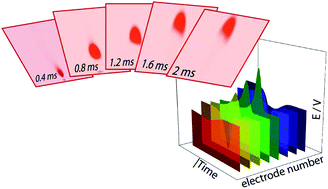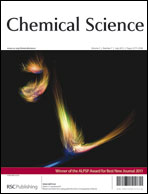A method of detection and identification of bioaerosols is described, based on gaseous plasma electrochemistry in a flame. This approach involves the combustion of individual bioaerosol particles entering a laminar hydrogen/oxygen flame, producing a plume rich in ionised species. As the plume expands and moves through the flame it can be comfortably detected at an array of eight individually addressable electrodes. Zero current potentiometric measurements, simultaneously recorded at each electrode, provide spatial distribution of the combustion plume, which depends on the particle's size, density and chemical make-up. We used a statistical classification analysis extracting specific features of the voltage traces from individual particle combustion events to differentiate between four model bioaerosols (Bermuda grass pollen, Bermuda smut spores, Johnson smut spores and Black walnut pollen). From a set of 120 individual combustion events (30 for each bioaerosol) the best case of identification was correct 29 out of 30 events for Bermuda grass pollen, and the worst being 19 out of 30 for Johnson smut spores. We propose a promising and robust analytical methodology for real-time bioaerosol detection.

You have access to this article
 Please wait while we load your content...
Something went wrong. Try again?
Please wait while we load your content...
Something went wrong. Try again?


 Please wait while we load your content...
Please wait while we load your content...